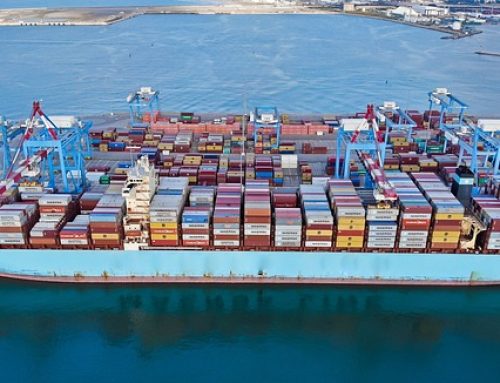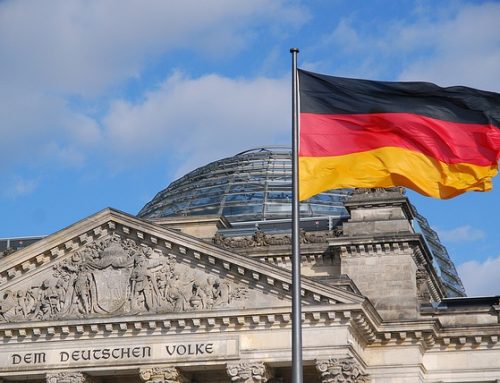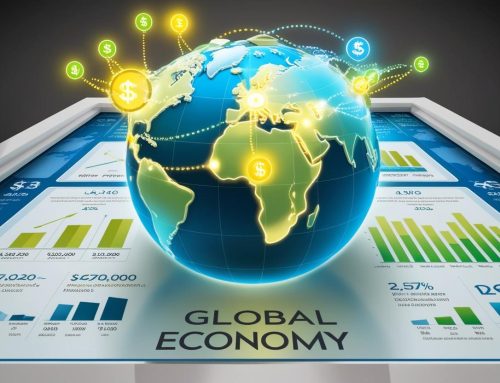October 27, 2022
The world economy is paying a high price for Russia’s unprovoked, unjustifiable and illegal war of aggression against Ukraine. With the impacts of the COVID-19 pandemic still lingering, the war is dragging down growth and putting additional upward pressure on prices, above all for food and energy. Global GDP stagnated in the second quarter of 2022 and output declined in the G20 economies. High inflation is persisting for longer than expected. In many economies, inflation in the first half of 2022 was at its highest since the 1980s. With recent indicators taking a turn for the worse, the global economic outlook has darkened.
Despite a boost in activity as COVID-19 infections drop worldwide, global growth is projected to remain subdued in the second half of 2022, before slowing further in 2023 to an annual growth of just 2.2%. Compared to OECD forecasts from December 2021, before Russia’s aggression against Ukraine, global GDP is now projected to be at least USD 2.8 trillion lower in 2023. There are many costs to Russia’s war, but this gives some sense of the worldwide price of the war in terms of economic output.
A key factor slowing global growth is the generalised tightening of monetary policy, driven by the greater-than-expected overshoot of inflation targets. Strict lockdowns associated with China’s zero COVID-19 policy have also impacted the Chinese and global economy. Shutdowns and property market weakness are slowing China’s growth to just 3.2% in 2022.
Inflationary pressures are broadening out beyond food and energy almost everywhere, with businesses throughout the economy passing through higher energy, transportation and labour costs. Broader inflationary pressures were already evident in the United States earlier in 2022, and this is now also being seen in the euro area, and to a lesser degree in Japan.
More than half of the items in the price index show inflation above 4% in the United Kingdom, the United States and the euro area, reflecting a sharp increase compared to a year before and more than doubling their targets.
Tight labour market conditions – with unemployment rates at or close to 20-year lows in many countries – are boosting wages and helping to mitigate the loss of purchasing power and growth. However, this is also contributing to broad-based inflation. Wage growth has strengthened in many countries, particularly the United States, Canada and the United Kingdom, but not yet in the euro area.
With the global economic cycle turning and monetary tightening by most of the major central banks increasingly taking effect, headline inflation is projected to peak in the current quarter in most major economies, and to decline in the fourth quarter and throughout 2023 in most G20 countries. Even so, annual inflation in 2023 will remain well above central bank targets almost everywhere.
The United States, which began monetary policy tightening earliest, is expected to see more progress in bringing inflation back to target than in the euro area or the United Kingdom. By contrast, with the recent spike in energy costs working its way through the economy and with monetary policy tightening beginning later than in the United States, both headline and core inflation are projected to remain elevated in much of Europe.
The inflation picture across the major emerging-market economies varies widely. Inflation is low and stable in China, while in Brazil and Mexico significant pressures are expected to subside towards targets as interest rate rises take effect. Very high inflation rates in Türkiye and Argentina are projected to continue in 2023, albeit somewhat lower than in 2022.
A risk to the Outlook is that reductions in energy supplies from Russia to the European Union prove much more disruptive than assumed in the projections.
Gas storage levels in the European Union have been raised to almost 90% of capacity. But even at this level, there may not be sufficient gas storage to ensure that demand in a typical winter can be met without depleting storage to dangerously low levels if the European Union fails to reduce gas consumption. Shortfalls could increase significantly if additional non-Russian supplies from outside the European Union fail to materialise as expected, or if the demand for gas is higher due to a cold winter.
Without sufficient supply diversification and orderly demand reductions, shortages could push up global energy prices, hit confidence and financial conditions and require a temporary rationing of gas use by businesses. Taken together, these shocks could reduce growth in the European economies by over 1¼ percentage points in 2023, relative to baseline, and raise inflation by over 1½ percentage point. This would push many European countries into a recession in 2023. For the world, inflation is pushed up by over ½ percentage point in 2023, with growth reduced by just under ½ percentage point.
Source: OECD
Legal Notice: The information in this article is intended for information purposes only. It is not intended for professional information purposes specific to a person or an institution. Every institution has different requirements because of its own circumstances even though they bear a resemblance to each other. Consequently, it is your interest to consult on an expert before taking a decision based on information stated in this article and putting into practice. Neither Karen Audit nor related person or institutions are not responsible for any damages or losses that might occur in consequence of the use of the information in this article by private or formal, real or legal person and institutions.






